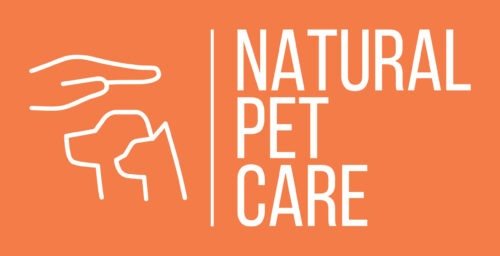I have a little old dog who has CCD (Canine Cognitive Dysfunction) as I am sure do many of you. (see below) This gradual onset disease is seen commonly in older dogs and shows in a number of ways. It described in between 14 and 35% of dogs over 8 years old with various factors increasing its prevalence for example Neutered dog more than bitches and yes can and does come on gradually from quite an early age.
Degenerative signs can be seen on a MRI scan
Analogous to Alzheimer’s in humans
• Neurodegenerative changes
• Vascular damage in the brain
• Free radical accumulation ->oxidative brain injury
• B-amyloid accumulation – extracellular
• Tau protein – intracellular and extracellular
• Neuroinflammation
• Mitochondrial dysfunction
• Neurotransmitter imbalance
• Brain atrophy
JAVMA 261, 11; 10.460/javma.23.02.0095
The Gut Brain Axis – recent research into the Microbiome
Recent studies have demonstrated the link between the Gut microbiome and indeed the mouth’s microbiome. In simple terms if the gut is healthy and the also the mouth the individual whether human, dog or rodent (on which many of these studies are based) is less likely to develop.
there is a study in which the micro-organisms in the gut of a human with alzheimers where transfers to healthy rats. They developed cognitive disease. Dogs with severe periodontal disease have worse cognition score.
So we aim to 1. keep our gut as healthy as possible with diet. 2. Keep the mouth healthy All with diet of course
Sodium oligomannate therapeutically remodels gut microbiota and suppresses gut bacterial amino acids-shaped neuroinflammation to inhibit Alzheimer’s disease progression.Wang, X., Sun, G., Feng, T. et al. 2019. Cell Res
Periodontal disease is associated with cognitive dysfunction in aging dogs: A blinded prospective comparison of visualperiodontal and cognitive questionnairescores)”. Dewey and Rishniw, 2021. (Open Veterinary Journal
The Oral-Gut-Brain AXIS: The Influence of Microbes in Alzheimer’s Disease”
Narengaowa et al, 2021. Frontiers in Cellular Neuroscience
Clinical Signs
What do we see in our pets?
Signs can be very variable from one individual to the next but basically we see a gradual reduction in cognitive ability.
“PET DOG MINDS” a nemonic for the main signs below Amy Watson MA VetMB MRCVS GDVCHM ACVCHM CVA CCRT (personal comm. 2024)
• Pacing
• Engagement with others have changed
• Toileting in the house/changes in toileting
• Disorientation
• Owner/others recognition problems
• Grumpy/Irritable
• Memory Loss learned bahaviours such as toileting
• Insomnia/Changes in sleep patterns
• Navigation issues
• Disregarded Training
• Staring into Space

This is Lexi, a Patterdale x Poodle we adopted 4 years ago she suffered from mild cognitive dysfunction when we adopted her but it improved with a better diet, MCT oil (Medium Chain Triglycerides such as coconut oil) good food and exercise. Later I did add some herbs
Here she is enjoying a dip in the Afon Seiont near Caernarfon, loving life we think.
So using both this information an observations of myself and colleagues here is a outline of what I would recommend for older patients
- Diet – we need to try to improve the Microbiome and so should feed a natural home prepared, good quality diet of meats, fish, eggs fruit and vegetables. Raw or cooked? There is some anecdotal evidence that light cooking can be better for some CCD patients but if you cook cook lightly, Give some raw vegetables, raw fruits including blueberries, apples, mushrooms and brassicas such as kale or similar. Juicing is great. You can read more in our nutrition pages. But basically a fresh diet will do so much.
- Healthy fats MCT oils There is evidence that Medium Chain Triglycerides such as those found in coconut oils can reduce the number of seizures seen in epileptic dogs. It provides fuel in a healthy form for the brain and may reduce the severity of signs seen. As age cerebral glucose metabolism becomes impaired and MCTs can provide energy to the brain. Epileptic dogs are shown to be more likely to develop CCD – Dosage: 9% of ME requirements per day JIVT See a good quality brand on Amazon https://amzn.to/3WY99xi
You can add to this
3. Omega 3 fatty acids – fish and flax oils
3. Omega 3 fatty acids – fish and flax oils. These supplements are great for brain health, they have neuro-protective properties and reduce inflammation. Omegas 3s also help skin, heart and kidney function. Give oily fish or fish oils such as in nutramega and nutramind but many other places
4. B vitamins – hese also are very important in brain and nerve function as well as anti-oxidant support. No need for expensive supplements you can give yeasts such as in Marmite, other product include include Nutramind from Nutravet with omega 3s and B vitamins
5. Medicinal Mushrooms such as Lions mane, Cordyceps and Reshi All the medicinal mushrooms and indeed normal button mushrooms have good levels of B vitamins, are neuroprotective. Lions mane increases Nerve Growth factor. Now this may contraindicate is use if your pet is having Librella – ask your vet.
https://myconutri.com/ is where I recommend clients look for these
6. Herbs There are two branches of herbal medicine Traditional Chinese and Western. The Western herbs include Ginko biloba as in Nutramind, also Ashwaganda, Panax Ginseng and Valerian. HThe prescription we give may vary depending on the patient for example if he is very nervous adding Valerian as a Chamomile porridge at bed time. Ideally speak to your herbal vet. We look for herbs called nervines which affect nerve function are Antioxidants, Anti-inflammatory, Anti-apoptotic and Increase Nerve Growth Factor and more
The more Traditional Chinese Medicine I have found useful is a Rehmannia and Panax combination modified by our colleague Dr Steve Marsden HALSCION Read more about it in its page here Halscion Again iff you can find someone then a vet trained in TVCM can add or alter this to suit the individual but I do recommend this as a great place to start.
7. Acupuncture Not something you can DIY in most cases! but this is a great help, improving blood flow to the brain look out for an experience vet.
8. CBD cannabinols may help. It is great at reducing anxiety, inflammation and pain, there are some mouse studies showing improved memory when on CBD/CBDA full spectrum products but not really much evidence in dogs or humans yet. We cannot sell this to you without a prescription any longer and you would have to book an appointment apologies.
Other Things
Now as is shown in studies with and recommend to humans there are also so many other factors without drugs, or expense
Exercise
Mental Stimulation & Interest use the brain or lose the brain
I know Lexi cannot get far nowadays as she is older but I should take her out, let her paddle in that river, hear the birds – no she’s deaf I forget! Going the same way- See the birds; sniff and sniff again.
Perhaps another dog in the house or take her to see one, doggy day care or exercise classes play ball. Over to you. Lets hear your ideas and stories
•.





